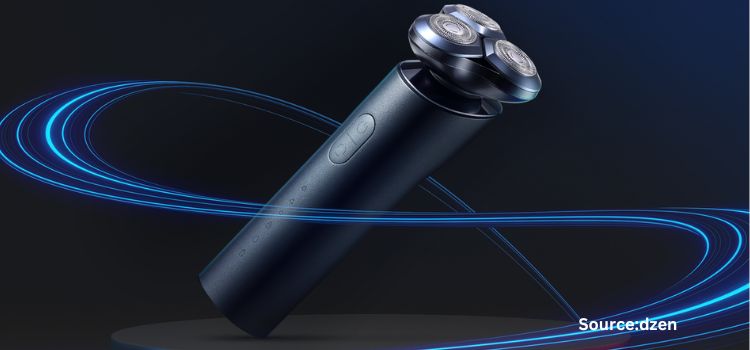
Japan Power Bank Market by Battery Capacity (Upto 5000 mAh, 5001-10000 mAh, 10001-20000 mAh, Above 20000 mAh), by Battery Type (Lithium-ion (Li-ion) and Lithium-Polymer (Li-Po)), by Portability (Mini Power Banks, Compact Power Banks, and Larger High Capacity Power Banks), by Charging Technology Type (MagSafe or Wireless Charging Support and Standard Charging Support) – Opportunity Analysis and Industry Forecast, 2024 – 2030
Industry: Retail and Consumer | Publish Date: 15-Feb-2025 | No of Pages: 80 | No. of Tables: 132 | No. of Figures: 97 | Format: PDF | Report Code : RC1491
US Tariff Impact on Japan Power Bank Market
Trump Tariffs Are Reshaping Global Business
Market Definition
Japan Power Bank Market size was valued at USD 86.43 million in 2023, and is predicted to reach USD 106.60 million by 2030, with a CAGR of 2.6% from 2024 to 2030.
The power bank industry is dedicated to designing, manufacturing, and distributing portable charging devices. These devices, typically equipped with lithium-ion or lithium-polymer batteries, are engineered to store electrical energy and provide on-the-go charging for many portable electronic devices such as smartphones, tablets, digital cameras, and laptops. The industry has evolved rapidly, responding to the increasing reliance on mobile devices and the consequent need for portable power solutions.
The advantages of power banks are numerous and significant. Their primary benefit lies in their portability, allowing users to charge electronic devices without a stationary power source. This feature mainly benefits people who travel frequently or engage in outdoor activities. Moreover, power banks are designed to be compact and lightweight, enhancing their convenience.
Additionally, modern power banks are available in various capacities, enabling them to store enough energy to charge multiple devices or provide several charges to a single device, which is especially useful during extended periods away from traditional power sources. However, the environmental impact of these devices, particularly the production and disposal of lithium batteries, is a concern, necessitating proper recycling and disposal methods to minimize their ecological footprint.
Japan's High Level of Urbanization Fuels the Power Bank Market Growth
A primary factor driving the adoption of power banks in Japan is the country's high level of urbanization. According to the World Bank, Japan's urban population was 91.96% in 2022. This significant urban density makes lifestyles more reliant on mobile technology, as urban dwellers often lead busy, on-the-go lives. In such an environment, the need for portable charging solutions like power banks becomes more pronounced, as people must keep their devices charged throughout the day, whether for work, navigation, or communication.
Growing Adoption of Electronic Devices Boosts Power Bank Market Expansion
Japan's rising use of electronic devices, particularly smartphones and laptops. The smartphone penetration rate in Japan reached 70.2% in 2023, marking a substantial increase from 57.8% in 2019 to 21.5% increase over four years.
This growth highlights the widespread reliance on smartphones in Japan and underscores the growing need for advanced charging solutions, including power banks, to cater to the tech-savvy population. As more individuals use these devices for extended periods, the demand for power banks that can provide fast and efficient charging increases.
Environmental Challenges Restricting Power Bank Market Growth
The growth of the power bank market is being hindered by its environmental impact, primarily stemming from the production and disposal of lithium batteries. The manufacturing process of lithium-ion batteries involves toxic metals and significant energy consumption, leading to greenhouse gas emissions.
Innovations in Battery Technology to Create Future Market Prospects for Power Banks
Growing technological innovations in battery technology, particularly with the development and incorporation of graphene batteries is poised to create ample opportunities for the power bank market in the future. Graphene, known for its superior conductivity exceeding that of copper, is emerging as a revolutionary material in the field of energy storage and transmission. The application of graphene in power bank technology significantly enhances their potential, distinguishing them from traditional lithium-ion counterparts. Graphene-based power banks demonstrate a markedly extended lifespan, a pivotal attribute for consumer electronics.
This technological evolution is not only expected to elevate the performance standards of power banks but also introduces an element of sustainability and cost-effectiveness. The integration of graphene batteries is thus not merely an advancement in battery technology, but also represents a paradigm shift in the power bank market, setting new benchmarks for efficiency, sustainability, and user convenience.
Competitive Landscape
The Japan power bank industry includes several market players such as Anker Innovations Co. Ltd., Xiaomi Corporation, Samsung Electronics Co., Ltd., Guangdong Oppo Mobile Telecommunications Corp., Ltd. (Realme, OnePlus), Lenovo Group Limited, Zagg Inc. (Mophie), Belkin International, Inc., Ambrane India Pvt Ltd., Baseus, Veger Power Inc.
Japan Power Bank Market Key Segments
By Battery Capacity
-
Up to 5,000 mAh
-
5,001 to 10,000 mAh
-
10,001 to 20,000 mAh
-
Above 20,000 mAh
By Battery Type
-
Lithium-Ion (Li-Ion)
-
Lithium-Polymer (Li-Po)
By Portability
-
Mini Power Banks
-
Compact Power Banks
-
Large High-Capacity Power Banks
By Charging Technology Type
-
Magsafe or Wireless Charging Support
-
Standard Charging Support
By Number of Ports
-
1 to 2 Ports
-
3 to 5 Ports
-
More than 5 ports
By Design
-
Standard Power Banks
-
Rugged Power Banks
By Display Technology
-
Power Banks with Display Technology
-
Power Banks without Display Technology
By Compatibility
-
Universal Power Banks
-
Device-Specific Power Banks
By Power Output
-
Less than 15W
-
15-65W
-
66 to 200W
-
More than 200W
By Distribution Channel
-
E-commerce or Online
-
Offline
REPORT SCOPE AND SEGMENTATION:
|
Parameters |
Details |
|
Market Size in 2023 |
USD 86.43 Million |
|
Revenue Forecast in 2030 |
USD 106.60 Million |
|
Growth Rate |
CAGR of 2.6% from 2024 to 2030 |
|
Analysis Period |
2023–2030 |
|
Base Year Considered |
2023 |
|
Forecast Period |
2024–2030 |
|
Market Size Estimation |
Million (USD) |
|
Growth Factors |
|
|
Companies Profiled |
10 |
|
Market Share |
Available for 10 companies |
|
Customization Scope |
Free customization (equivalent up to 80 working hours of analysts) after purchase. Addition or alteration to country, regional, and segment scope. |
|
Pricing and Purchase Options |
Avail customized purchase options to meet your exact research needs. |
KEY PLAYERS
-
Anker Innovations Co. Ltd.
-
Xiaomi Corporation
-
Samsung Electronics Co., Ltd.
-
Guangdong Oppo Mobile Telecommunications Corp., Ltd. (Realme, OnePlus)
-
Lenovo Group Limited
-
Zagg Inc. (Mophie)
-
Belkin International, Inc.
-
Ambrane India Pvt Ltd.
-
Baseus
-
Veger Power Inc.

















 Speak to Our Analyst
Speak to Our Analyst





















